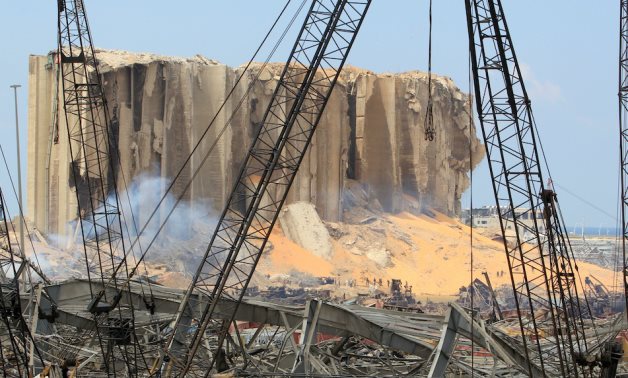
A view shows the site of Tuesday's blast in Beirut's port area, Lebanon August 6, 2020. REUTERS/Aziz Taher
MOSCOW - 6 August 2020: The explosion that devastated Beirut has been linked to a mishandled ammonium nitrate cargo confiscated from a foreign ship, Russia Today reported.
A former crew member told Russia Today that the vessel, owned by a dodgy businessman, was a disaster in the making.
Some 2,750 tons of ammonium nitrate – a highly explosive fertilizer – went up in a terrifying blast in Beirut on Tuesday, Lebanese officials have said.
The mushroom-shaped explosion left a wasteland where the city port stood, turning the surrounding buildings into ruins and killing more than 100 people.
Thousands of others have been injured in a kilometers-wide radius. Personnel from the port authorities have been arrested while a probe has been launched into the mishandling of the dangerous material. But how did this ludicrously large cache end up in the Beirut port in the first place?
The ammonium nitrate cargo has been confiscated from the arrested vessel MV Rhosus, Lebanon’s Supreme Defense Council has confirmed. The ship is said to have entered Beirut port in September 2013 due to technical difficulties and was eventually banned from continuing its voyage. A deeper look into its history shows, however, that the vessel was a floating disaster, and trouble was brewing on it for quite some time.
According to the MarineTraffic tracking portal, Rhosus was built in 1986 and has been through quite a number of owners. Its recent history began in 2012 when it was bought by Teto Shipping – a company registered in the Marshall Islands and owned by a Cyprus-based, Russian-born businessman, Igor Grechushkin – just about a year before it was seized by the Lebanese port authorities. The company itself was formed that same year and Rhosus appears to have been its only vessel. It is now becoming clear, however, that the ship could hardly have been called a worthy vessel, even then
Comments
Leave a Comment